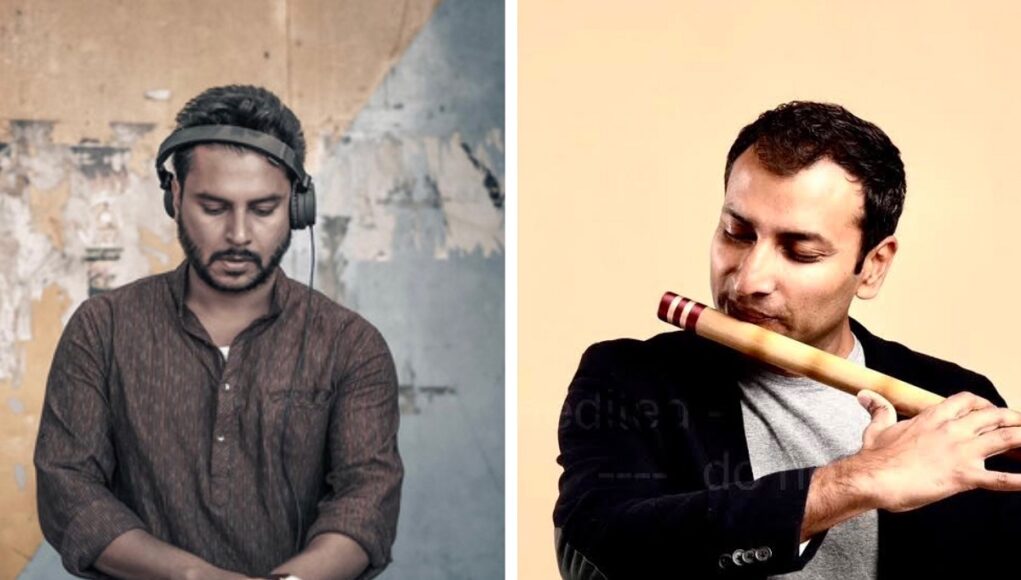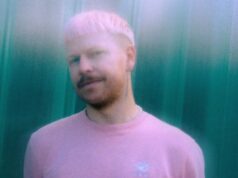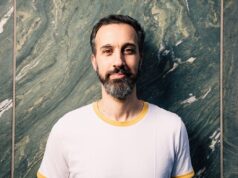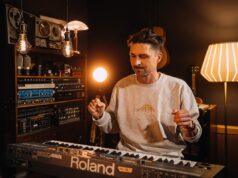Can you tell us about your background and how you first got started in music? How did you first become interested in electronic music and what drew you to it as a medium for self-expression?
Pawas: The sound of my father playing the sitar every afternoon was my introduction to music as a child, which eventually evolved into learning to play the Tabla and accompanying him on stage from time to time. Once you get hooked on the music there is no turning back. I was curious about every sound/track I heard and wanted to explore more and create my own composition. I started to produce electronic music because I wanted to be able to play my own tracks. Over the years the process became more intellectual and therapeutic without me realizing it. Self-expression is not the intention here, it’s more about sharing creativity with the world. It’s not about me, it’s about the music.
Anurag: I started my musical journey as a flute player with deep-rooted training in Indian Classical Music at the age of 9. I had my debut performance on Indian National Television (Doordarshan) at the age of 12. As a kid, I was simply enjoying being able to play an instrument. The positive feedback from the audience encouraged me to continue doing so. I had the privilege to perform regularly for All India Radio (AIR) as a junior artist. And later on in the various music festivals in India and Sweden. My life journey brought me to Sweden in 2006 and I got surrounded by a whole new vibrant music scene (especially house and electronica) that Stockholm is known for. The rhythmic layers, polyrhythmic grooves and cadence of this genre always fascinated me. I wanted to bring the melodic depth to that universe and with Pawas I found the perfect partner who had the understanding of both worlds to bring this idea to life.
Who are some of your biggest musical influences, both within electronic music and outside of it? How have these influences shaped your sound and approach to creating music?
Pawas: I was heavily influenced by a melange of Hindustani classical (Sitar) and rock / pop music. When I first heard the groundbreaking fusion band named“Shakti” I was blown away, I was 8 years old. Also another legend “Enoch Daniels“, an Indian film composer & arranger who released a LP called “Sitar goes Latin” which consists of covers of classics such as “Besame Mucho”, “Quizas Quizas” and many more played on Sitar by Jayram Acharya, which i could not get enough of, which sowed the seed in me. In electronic music, I was and am heavily influenced by the likes of DJ Koze, Matthew Herbert, and Boards Of Canada to name a few. This assortment of classical, fusion, pop, electronica, house & techno has helped me find my niche.
Anurag: Having been formally trained in Indian Classical music, there have been many maestros who have influenced me from that world. Be it Hariprasad Chaurasia, the flute legend or Ravi Shankar, the Sitar maestro who brought the world of Indian classical music to the West and did his iconic collaboration with George Harrison, starting a whole new Raga-Rock genre. Within electronic music, both Sweden and Germany have
produced some quality musicians of the likes of Jesper Dahlbäck, Stephan Grieder, to name a few. There are many popular hit artists in both countries who have shaped these genres. All of them have influenced and inspired me and they deserve the credit for bringing it to the masses in their unique ways.
Can you walk us through your creative process for writing and recording a new song? How do you typically begin a new track, and what are some of the key elements or techniques you focus on as you develop it?
A&P: Since Anurag is a trained classical musician, he sets the “Raga” or scale and I create a simple groove with a basic chord for him to experiment on. Once the flute is recorded, we find the parts that we both like the most and start putting them together. We keep iterating till we reach the state of flow and start enjoying ourselves with what we have created.
Your latest project is really gaining traction, can you tell us about it? How did this project come about and what inspired you to create it? What was your approach to making it and what do you think sets it apart from your previous work?
A&P: Non Solo is a collaboration that merges the depth of Indian classical music with the rhythms of house and electronica in its first release Sarang EP. Our life journeys took us mto Stockholm and Berlin, both cities a cultural and musical powerhouse in their own mright. The inspiration behind this collaboration came from a strong desire to bring mtogether the melodic depth of Indian classical music and the rhythmic layers of house in a musical duet, a jugalbandi. Our approach is the effort we apply during the creative process that we mentioned earlier. We decided on something and pulled it through. It did take some time, but you know what they say. What sets it apart is the spontaneity and mindfulness while composing music. Everything is in the moment. We believe in each other’s skills and let creativity flow by keeping an open mind.
What has been the highlight of your career so far? Can you talk about a specific moment or accomplishment that stands out as particularly meaningful to you?
Pawas: Of course releasing my first record ever in 2007! Every time a track is completed and goes for the final processing is an accomplishment hence I cannot specify one particular moment.
Anurag: There are two types of highlights for me. It may sound a bit cliche but every performance or concert before a live audience is the first type of highlight. The feedback and adulation of the music lovers keep me inspired and going. The second type of highlight happens in the studio as Pawas mentioned, when our creative collaboration and iterations hit the right spots. So there would be many to mention. However, let me mention two concrete examples in this context. One of my major highlights would be my first performance on national television at the age of 12. That kick started my journey. The most recent one for Non Solo would be when Pawas and I rushed to my flat in Stockholm after our discussions on how to merge our skills and join forces to record the track named Svar in a makeshift studio in my bedroom by hanging the Shure SM 58 from the ceiling. We recorded that track in a single take and the creative energy it triggered started the whole Non Solo journey.
Can you tell us about any upcoming projects or collaborations you have in the works? Are there any new directions or sounds you’re exploring in your music right now?
A&P: At the moment we are working on new material for the next releases. We do have some ideas which we are planning to explore. We will continue to bring out the melodies from different traditions and genres be it classical or folk, while creating our own and merging them with the rich rhythmic layers of house and electronica. We start with a clean slate every time and don’t know what direction it will take or what sounds
we may explore. Stay tuned and be ready to be surprised together. :-)
As a musician, what message do you hope to convey through your music? What themes or ideas do you find yourself returning to again and again in your work?
Pawas: Every song has a message, it lies in the conscience of the beholder to munderstand it. Themes… well we don’t really have a theme, as we try to keep things very open and diverse, but in the end, it’s all about the kick drum ☺.
Anurag: We are no Bonos or activists :-) so there is no ‘save the world’ type of message here. Music in itself is the message. We want our listeners to experience what we feel during the process of creating the music. Sometimes we start with the idea of exploring the depths of human emotions and experiences, something we go through as part of creating the music ourselves. It could be joy, melancholy, love, hurt, serenity or finding back to oneself. When we start building the composition, let’s say for example, by following the structures of raga traditions and the rhythmic world of house, the layers of music start coming together. Sometimes the flow takes over and something magical happens and
other times we need to go back and make changes to it if things don’t fit. Other times it simply comes like an “Ohrwurm” and we start adding layers of both melodies and rhythms to just get it out of our heads.
Can you tell us about any challenges you have faced in your career and how you overcame them? Have there been any specific obstacles or difficulties you’ve had to navigate as an electronic musician?
Pawas: The biggest challenge is the survival of a musician, which is ongoing. How to overcome that: Dedication, keep on at it, and don’t let the worldly discomfort get to you and affect your craft which will also help you grow as an artist, but there is no end to it unless you choose the path of resistance and move on to the other ways of living.
Anurag: Waiting for the right moment and knowing the right moment has been one of the challenges. Also, when you are doing something new, you are always asked to define it, box it and compare it to something similar that may have already happened.
How do you see the music industry evolving in the next 5 years? What changes do you think we’ll see in terms of technology, distribution, and audience engagement?
Pawas: This industry is an infinite loop, the genres keep rotating within 10-15 years. AI is the next big thing, but it won’t take over the music industry. It might be able to ease the process and support the creativity of the artist. In terms of audience engagement, I can only hope that the next generation has more patience to listen to tracks which are longer than 2 minutes.
Anurag: No algorithm can replace human ingenuity when it comes to creating original music and sound. It’s hard to predict where we will be in terms of technology 5 years from now but talented musicians and good quality music will keep coming out regardless.
What advice would you give to aspiring musicians trying to make it in the industry? Are there any particular tips or strategies you’ve found to be particularly effective in building a career as an electronic musician?
Pawas: Never stop creating, consistency is the key! Take your time in releasing your music as every track you put out is a statement, which can not be reversed. Negative Feedbacks/critics are important and one should be able to process them and channel them into something positive.
Anurag: I can share what has worked for me. You need to practice your mcraft/instrument/software or whatever it is you have chosen as your speciality, a minimum of a couple of hours a day every day for six months without giving up, or at least in the beginning till you have found your unique style. Learn to sing or play an instrument of your choice in any case. This will bring a whole new depth and open up many dimensions in your music creations. I am biased towards classical music but any genre would do as long as you learn its core and grammar. Listen to the musical legends from around the world and not just the chart toppers. Surround yourself with driven musicians and some of their magic will rub off on you. Start performing as soon as you have something to share with the audience and don’t wait for it to be perfect.
What’s next for you?
Pawas: Music :)
Anurag: Keep creating more innovative sounds. Keep exploring, experimenting and merging the depths of different genres.








